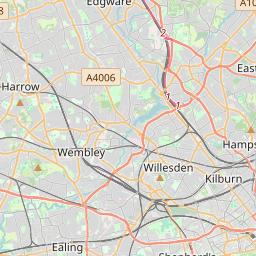Inscription
The London Wall Walk follows the line of the City Wall from the Tower of London to the Museum of London. The Walk is 1¾ miles (2.8km) long and is marked by twenty-one panels which can be followed in either direction. The City Wall was built by the Romans c AD 200. During the Saxon period it fell into decay. From the 12th to 17th centuries large sections of the Roman Wall and gates were repaired or rebuilt. From the 17th century, as London expanded rapidly in size, the Wall was no longer necessary for defence. During the 18th century demolition of parts of the Wall began, and by the 19th century most of the Wall had disappeared. Only recently have several sections again become visible.
St Giles Cripplegate, Tower
This medieval tower marks the north-west corner of the Roman and medieval defences. Most of the Roman Wall was completely rebuilt in the early medieval period. In 1211-13 a new defensive ditch was dug around the outside of the Wall and soon after a series of towers was added along its western side. This tower survives to two-thirds of its original height. It would have had wooden floors. In peacetime the towers were rented for a variety of uses and some were occupied by hermits. This tower may have been used for this purpose since in the 13th century the hermitage of St James in the Wall
was built nearby. In 1872, when the area was redeveloped, the crypt of the hermitage chapel was removed to Mark Lane where it still survives.
Although the City ditch was eventually filled in and the churchyard of St Giles was extended up to the Wall, the tower survived. It became almost buried in earth dumped to raise the level of the churchyard, but was uncovered during the Barbican redevelopment of the 1960s.
St Giles Cripplegate, Tower
This medieval tower marks the north-west corner of the Roman and medieval defences. Most of the Roman Wall was completely rebuilt in the early medieval period. In 1211-13 a new defensive ditch was dug around the outside of the Wall and soon after a series of towers was added along its western side. This tower survives to two-thirds of its original height. It would have had wooden floors. In peacetime the towers were rented for a variety of uses and some were occupied by hermits. This tower may have been used for this purpose since in the 13th century the hermitage of St James in the Wall
was built nearby. In 1872, when the area was redeveloped, the crypt of the hermitage chapel was removed to Mark Lane where it still survives.
Although the City ditch was eventually filled in and the churchyard of St Giles was extended up to the Wall, the tower survived. It became almost buried in earth dumped to raise the level of the churchyard, but was uncovered during the Barbican redevelopment of the 1960s.
Details
| HM Number | HM282K |
|---|---|
| Tags | |
| Marker Condition | No reports yet |
| Date Added | Sunday, June 3rd, 2018 at 10:03am PDT -07:00 |
Pictures
Locationbig map





| UTM (WGS84 Datum) | 30U E 701549 N 5711476 |
|---|---|
| Decimal Degrees | 51.51840000, -0.09491667 |
| Degrees and Decimal Minutes | N 51° 31.104', W 0° 5.695' |
| Degrees, Minutes and Seconds | 51° 31' 6.24" N, 0° 5' 41.7" W |
| Driving Directions | Google Maps |
| Which side of the road? | Marker is on the right when traveling West |
| Closest Postal Address | At or near 1 Monkwell Square, London England EC2Y, GB |
| Alternative Maps | Google Maps, MapQuest, Bing Maps, Yahoo Maps, MSR Maps, OpenCycleMap, MyTopo Maps, OpenStreetMap |
Is this marker missing? Are the coordinates wrong? Do you have additional information that you would like to share with us? If so, check in.
Nearby Markersshow on map
Maintenance Issues
- Is this marker part of a series?
- What historical period does the marker represent?
- What historical place does the marker represent?
- What type of marker is it?
- What class is the marker?
- What style is the marker?
- Does the marker have a number?
- What year was the marker erected?
- Who or what organization placed the marker?
- This marker needs at least one picture.
- Can this marker be seen from the road?
- Is the marker in the median?

Comments 0 comments